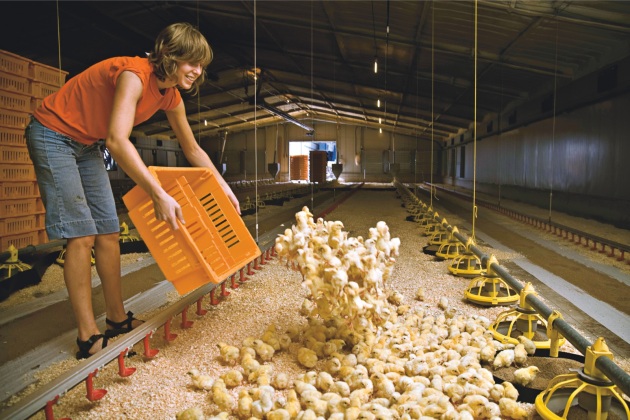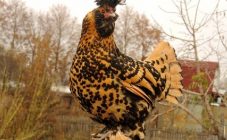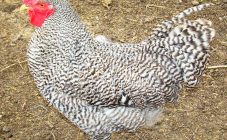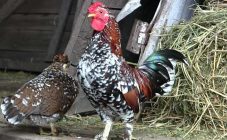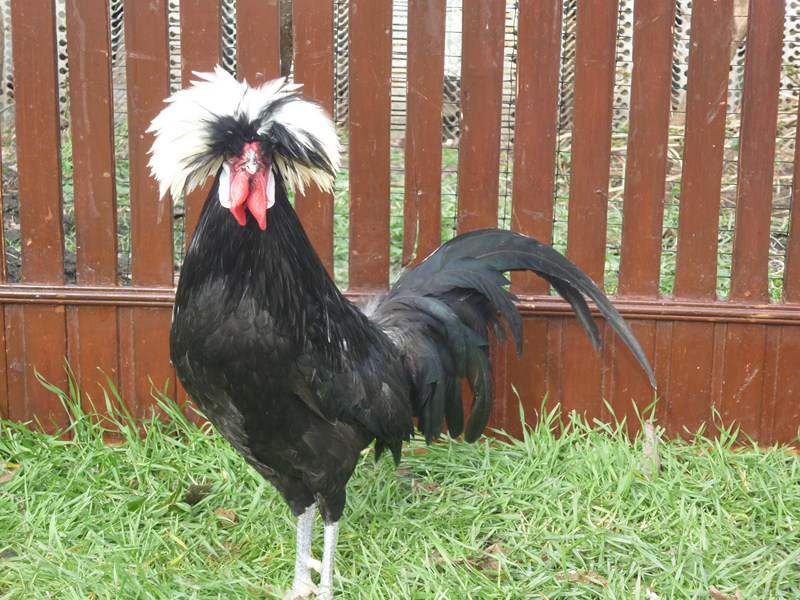Content:
Super Nick chickens were bred by German scientists and brought to Russia in 2005. Industrial breeding began in the Aleksandrovskiy poultry breeding stock and continues today. This highly productive egg breeding product was created for industrial production, but private farms are also happy to start this cross. True, unlike purebred thoroughbred chickens, it will not work to reproduce parental qualities during home incubation. Chicks or eggs for hatching will have to be purchased from the producer.
General characteristics of the breed
Early maturation and the highest egg production make this hybrid unbeatable. Super Nick is a cross, created by breeders and fulfilling their dream of laying hens with optimal production rates and excellent health.
Description of Super Nick chickens
Representatives of the Super Nick cross have a pure white plumage that fits tightly to the body. Even slight blotches of other shades are the reason for the culling of the bird. The birds are compact, the carcass is triangular, the head, back, chest, neck are medium-sized, the catkins and the leaf-shaped comb are red, the beak is gray, the thin legs are dirty yellow.
Males differ from females only in weight. The average weight of females is 1.5 kg, and that of males is 2-2.3 kg. At the same time, differences in sex are visible on the very first day - females begin to fledge immediately, and males - later. 98 chickens out of 100 survive, the survival rate of mature birds is 95 out of 100. For such a bird's safety, optimal conditions must be created:
- room temperature 35 degrees at the time of hatching chicks from the incubator (decreases by 3 degrees every week);
- constant access to drinking bowls with clean water;
- constant air exchange;
- constant lighting in the first days and 4 hours after 2 in the following;
- feeding with a special homogeneous composition;
- periodic treatment of the room with antiseptics.
Egg production of a hybrid
The variety was bred specifically for the production of eggs. Laying hens begin laying at 4 months and on average lay 340-350 eggs per year. The first eggs are small, but then their weight reaches 60 g. Their shell is white, rather strong.
Maternal instinct is absent in chickens. Even if such a desire did arise, the hatched chicks will not inherit the traits of their parents.
Unlike other artificially created breeds, the supernick is active, birds can easily take off. It is necessary to take this fact into account when building a chicken coop.
Feeding and keeping conditions of the species
There is no seasonal change in the feeding of the cross. It is enough for them to receive a crushed grain mixture three times a day. If possible, you can add kitchen waste, seasonal vegetables, hay. The calorie content of the feed depends on the conditions of detention, since the hybrid is prone to obesity.
Chickens tolerate cold well and will regularly fly at temperatures of +14 degrees and above. Also, the performance of layers does not depend on molting.
Despite the high viability, hybrid chickens need to create good conditions for development.They develop better with regular feeding.
Feeding mode
Chickens are fed special feed, increasing the dose as the bird grows. For the first week and a half, young animals are fed every 2 hours, up to one and a half months - 3 hours. Given the high cost of industrial feed, it will be correct to prepare the feed yourself. For example like this:
- boiled egg;
- porridge (millet, corn);
- nettles or other herbs;
- grated vegetables;
- cottage cheese.
Disease prevention and parasite control
The breed is almost not susceptible to chicken diseases, but still, from the first days, they are vaccinated against bronchitis, bursitis and Newcastle disease. In a month - revaccination. In a room with chickens on a permanent basis, there should be a container with ash and sand. Swimming in it, the bird independently gets rid of the blood-sucking parasites.
In the first days after hatching, the beaks are trimmed to the chicks. But this is not a mandatory procedure and is only used on large farms.
Breed advantages and disadvantages
Cross advantages:
- rapid maturation;
- high egg production;
- unpretentious content;
- disease resistance;
- cold resistance.
Disadvantages:
- restless character;
- short term of productivity;
- obesity tendency;
- lack of maternal instinct.
Chickens are very beneficial for commercial breeding. Their disadvantages are repeatedly overlapped by their advantages. Even for a private farm, getting an egg per day from each layer all year round will easily cover the cost of feeding, keeping and renewing the herd.

